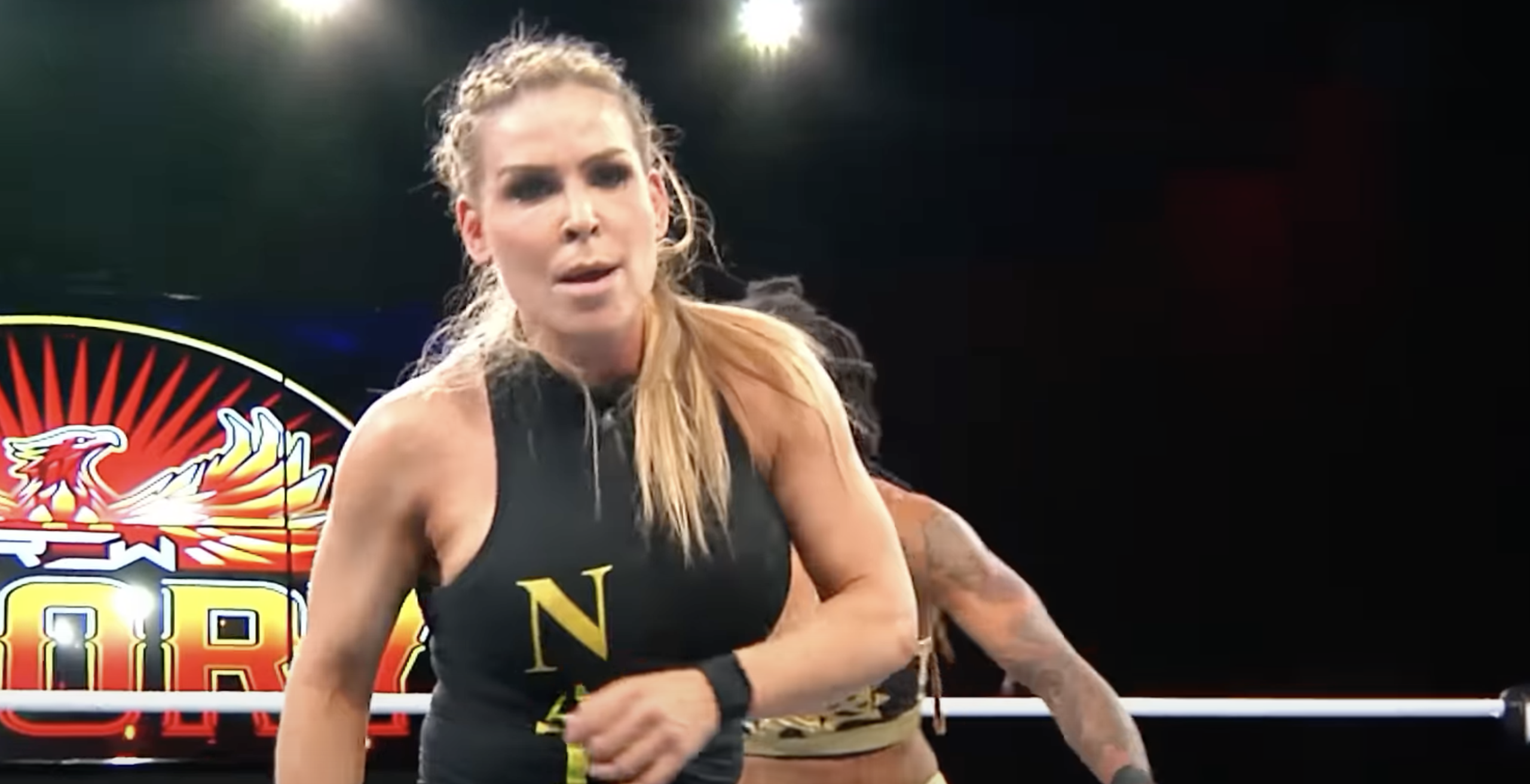If you’re looking for lace and roses, turn the page. If you want soft focus and feel-good stories, this ain’t it. Kay Noble wasn’t the kind of woman who gently climbed into a ring—she was the kind that cannonballed into it. Half hurricane, half housewife, and all hell behind the eyes, Noble didn’t wrestle like a lady. She wrestled like a starving dog fighting for a bone made of brass knuckles and broken dreams.
Born Mary Charlene Noble in St. Joseph, Missouri, back when the country still believed in apple pie and church picnics, she was dubbed “Kay” before she could spell rebellion. By 15, she wanted to fight for a living. By 18, she was taking bumps and body slams from women twice her size and three times as bitter. This was the 1950s—when “women’s wrestling” was a novelty, a sideshow, a gimmick. But Noble didn’t see it that way. To her, it was salvation dressed in spandex and bad lighting.
Trained by Laura Martinez and Sonny Myers, Kay was baptized not in water, but in blood, sweat, and the stale funk of old gym mats. She debuted in 1957, answering a local promoter’s dare disguised as an opportunity. A year later, she and three other women were charged with inciting a riot after a brawl spilled out of the ring and onto the streets. That’s not a gimmick, that’s gospel. She wasn’t playing tough—she was tough.
She came up in a time when female wrestlers weren’t handed anything except bad paychecks and worse dressing rooms. But she held her own against the likes of Penny Banner, Gladys Gillem, and The Fabulous Moolah—each a different brand of mean in a time when being a woman in the business meant crawling through hell just to get on a card.
She was a paradox in pigtails. A high-flyer with the ferocity of a barroom brawler. Someone who could leap off the top rope and still make it home in time to change diapers and cook dinner. She married fellow wrestler Doug Gilbert—real name Doug Lindzy—after meeting him in an elevator. She had five kids, ran a home, and trained future stars like Colonel DeBeers. Her life wasn’t just wrestling—it was chaos wrapped in wallpaper and hand-me-downs.
In the 1960s, she haunted Minneapolis like a shadow with a dropkick. Mixed tag matches with Gilbert. Blood feuds with Barbara Baker and Betty Niccoli. Teaming with Terry Funk. Trading fists with Jean Antone. Wrestling in some town you’ve never heard of on a Tuesday, then driving all night in a station wagon full of baby bottles and bruised ribs to do it again Wednesday.
In 1963, she beat Kathy Starr to win the vacant AWA World Women’s Championship and held it for eight years. Eight years in a business where champions change hands quicker than alimony checks. That’s not a reign, that’s a dynasty.
Her toughness wasn’t a sales pitch—it was her signature. Kay Noble once made it a thing to be knocked down and still smile like you knew the taxman was coming for your opponent instead. She was WFIA’s “Girl Wrestler of the Year” in 1971, a title that sounds quaint until you realize she was probably throwing dropkicks in between loads of laundry and teaching her sons how to ride horses.
By the 1980s, Noble started slowing down—not because she couldn’t keep up, but because she had more important things to do. Raise kids. Fix homes. Build furniture. Run an upholstery shop in Amarillo. Wrestlers have been known to open bars, pawn their boots, and chase fading spotlights. Not Kay. She went into pest control. That’s right—bugs feared her too.
Later, she worked in pediatrics, proving once again that she could cradle life as easily as she could cradle a suplex. She was a mother, a nurse, a piano player, and a reminder that women don’t need to be one thing. They can be every damn thing—and they can do it with scars.
Her personal life was a patchwork of husbands, horses, heartbreak, and harmony. Three marriages, five kids, twenty grandkids, and one great-grandchild. She was married to Dick Bell when cancer—always the cheap-shot artist—crept up behind her and landed the final blow in 2006.
But even death had to earn that one.
At the end of her road, Kay Noble wasn’t remembered for just one match or one belt. She was remembered for being the blueprint. She was women’s wrestling before it had its revolution. She was the revolution before hashtags and documentaries. Long before the four horsewomen or Evolution or whatever flavor the marketing machine was serving, there was Kay—taping her wrists, checking on her kids, and walking into arenas full of drunks and doubt with her chin up and her eyes locked on the next victim.
She died in Amarillo, Texas. A fitting town for a woman who lived like a wild horse and never asked permission to gallop. They said it was stomach cancer. But maybe it was just that the world wasn’t big enough to hold her anymore.
She was honored by the Cauliflower Alley Club in 2001. Inducted into the Professional Wrestling Hall of Fame in 2010. But she didn’t need plaques to validate her place. Her name lived in scar tissue, in the shoulders of every woman who picked up a mic or a folding chair and believed they could belong in that ring.
Kay Noble didn’t just wrestle. She fought. For respect. For equality. For her family. For herself.
She was a matriarch, a menace, and a miracle.
And when the bell rang, the world always knew one thing:
Kay Noble was coming.
And hell was riding shotgun.
